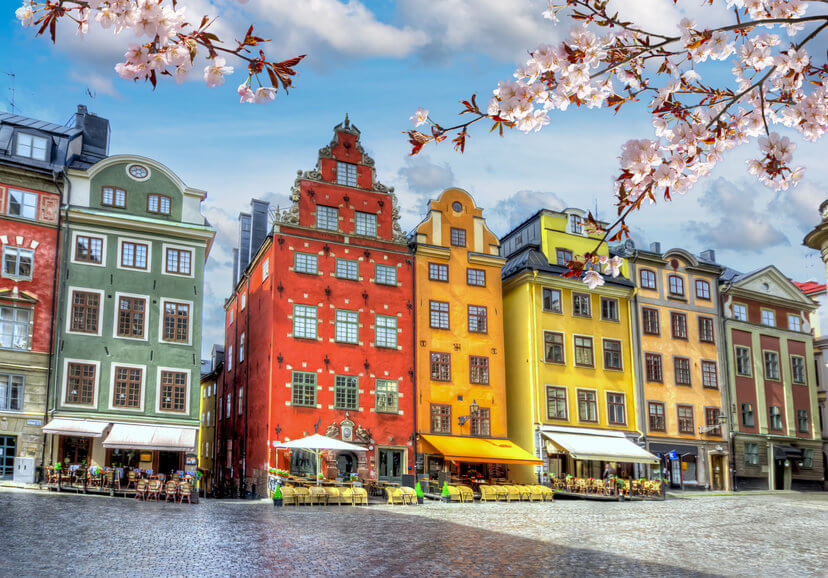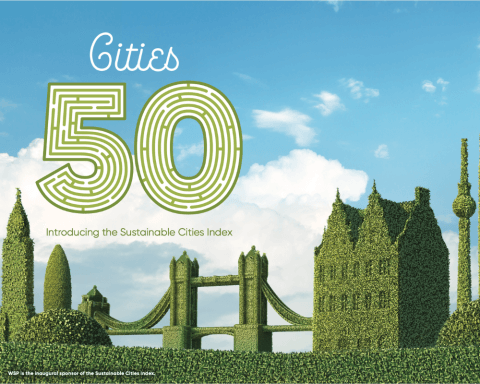Don Iveson is a former mayor of Edmonton, executive advisor for climate investment and community resilience at Co-operators, and guest editor of Corporate Knights’ Sustainable Cities section.
As go our cities, so goes our world.
With more than half the world’s people living in cities, and urbanization only accelerating, more focus is rightly coming to the role (and performance) of cities on climate, water, air quality, biodiversity and a host of related social, health and economic outcomes.
A city can achieve sustainability goals even if its nation does not, but no nation, nor the world, will achieve its sustainability goals if our cities don’t clean up after themselves.
I believed this instinctively when I first ran for Edmonton City Council 15 years ago, but now there is so much more comparable data to work with, and more reason than ever to demand better habitats for ourselves. Almost everyone, regardless of their politics, can agree that they want clean air, stable energy prices, a healthy community and resilience in the face of crisis and change. I’ve tested this argument from many different angles, including Edmonton’s citizen assembly on climate and energy transition a decade ago, where citizens from diverse demographics and political alignments arrived at overwhelming consensus to endorse strong environmental action. In my experience, people can agree that they want their community to be better for their kids and grandkids.
As with most challenges, however, the first step is admitting we have a problem. Mayors and city councils have been sounding the alarm on climate in North America and abroad since the 1990s. The U.S. Conference of Mayors and the Federation of Canadian Municipalities have long provided training and standardized assessment tools and helped to coordinate advocacy – creating capacity to move quickly as senior governments pull regulatory levers for stronger building codes, broader electrification and carbon pricing.
Despite widespread good intentions (more than 11,000 cities have signed the Global Covenant of Mayors for Climate and Energy) there are some real barriers to progress. After chairing Canada’s Big City Mayors’ Caucus for five years, and having collaborated on climate and biodiversity with mayors from around the world, I’ve learned that the story is similar most everywhere: power is fragmented, sometimes across complex layers of government. Plus, the general scarcity of revenues for cities, and widespread prohibitions on deficit spending, create sharp resource constraints and can reinforce short-termism. However, these limitations also drive creative problem-solving and novel partnerships.
Consensus for transformational change, where it is found, tends to be built from the ground up from people demanding better in their neighbourhoods. Denmark didn’t tell Copenhagen to approach sustainability as an intentional whole-of-city design exercise; it emerged as a solution to congestion and livability challenges felt on the ground. Danish culture may have made it easier, but the will coalesced around communities demanding change. Clearly, though, it helps when values are tightly aligned, as they are among Nordic cities clustered at the top of Corporate Knights’ inaugural Sustainable Cities Index, with Stockholm in first place.
Fortunately, at least in our democracies, the capacity to channel bottom-up resolve is one of the very reasons we have local governments, and one of the reasons why cities tend to be reliably progressive, even in conservative-leaning states or provinces. The will to lead, to think longer-term, to defy polarization, are hallmarks of local democracies that are more important than ever. Unlike our national and provincial politics – which are easily infected with binaries and zero-sum thinking – most city councils, at least in Canada, are non-partisan, fluid coalitions, just like the publics they proximately represent. Even in partisan city governments in the United States, citizens actually meet their elected officials at the grocery store or school drop-off and can come down to town hall and still raise the level of debate through citizen engagement. We’ve never needed these consensus-building structures more than now.
As with most challenges, however, the first step is admitting we have a problem. Mayors and city councils have been sounding the alarm on climate in North America and abroad since the 1990s.
This point was driven home to me in 2016 when I attended COP22, the UN climate summit in Marrakesh, Morocco. Following the historic 2015 Paris Agreement, the meeting was focused on implementation, including the mobilization of “non-state actors” such as cities and the business community. However, days before the conference started, that year’s U.S. presidential election outcome cast real doubt over the nascent climate consensus. The mood, particularly among American scientific and diplomatic officials, was dire. But toward the end of the conference, we found hope in the reminder of how many non-state actors were still committed, including cities from around the world.
Read the full report.
A few months later, then-president Donald Trump pronounced, “I was elected to represent the citizens of Pittsburgh, not Paris” while triggering the U.S.’s withdrawal from the Paris Agreement. Pittsburgh Mayor Bill Peduto fired back (after pointing out that 80% of Pittsburgh had voted for Clinton), proclaiming, “As the mayor of Pittsburgh, I can assure you that we will follow the guidelines of the Paris Agreement for our people, our economy [and our] future.” The We Are Still In climate mayors group was soon more than 400 strong and represented a majority of the population and economy of the United States, driving implementation of fleet electrification, renewable energy systems, political solidarity and much-needed hope.
In this time of extraordinary political volatility, our cities matter more than ever. Which is why it is important to shine a light on what’s working, how cities compare – and where there’s room for improvement.
It’s difficult to compare fast-growing cities in the Global South with old cities in Europe or sprawling cities in North America or megacities in China, but there are some basic standards around water and air that provide key benchmarks, which explains why cities with poor air or inconsistent potable water rank lower.
Sometimes the contrasts are striking even within a country. For instance, I remember travelling to China on a trade mission and visiting coastal cities like Shenzhen and Guangzhou (34 and 48), with the newest, vastest infrastructure I’d ever seen, shrouded by some of the worst air quality I’ve ever experienced, and also visiting smaller inland cities where people were burning coal in open stoves for cooking next door to brand new skyscrapers.
On this point, there are novel and relevant metrics in the Sustainable Cities Index. One I’m particularly pleased to see included is consumption-based carbon accounting, which factors in the impacts of production and supply chains, especially for cities with high rates of consumption. I would often hear complaints in Alberta about proliferating smokestacks in China during coal phase-out and carbon-pollution pricing debates – but a lot of those smokestacks are pumping out pollutants because of how much we buy from other parts of the world, and we need to account more fully for the globalized environmental implications of our own vast consumer demand.
In a time of extraordinary political volatility, our cities matter more than ever.
Consumption-based carbon accounting was something we called for in the Edmonton Declaration of 2018, emerging from the first ever Intergovernmental Panel on Climate Change conference on Cities and Climate, hosted in my city. High consumption rates associated with high disposable income, along with high car dependence and sprawl, are factors in Edmonton’s (21) and Calgary’s (22) lower ranking among the Canadian cohort.
Another essential measure in the Sustainable Cities Index is resiliency, since most cities aren’t adapting quickly enough to the rise in devastating floods, blistering heat waves and other climate-related catastrophes. For some cities in low-lying coastal areas, their very existence is threatened. The state of preparedness varies radically, from cities with well-documented resiliency cultures rooted in historic disasters (16th-place San Francisco’s history of earthquakes, for example). Sadly, in any greenhouse gas emissions scenario, these climate risks are going nowhere but up for several generations.
There is as much art as science in rankings and indices. Having celebrated as mayor when my city placed well, and also responded defensively when we didn’t, there are many possible interpretations. But the real art is identifying patterns and trends, like long-time leadership in Curitiba, Brazil (14), rewarding sustained leadership in northern Europe and on the west coast of North America, and motivating action from those in a position to drive needed change in some of the largest economies in the world (Houston, 39, São Paulo, 42, and Shanghai, 49).
We don’t need all our cities to look the same. In fact, innovation and competition among them is one of the things that will get us where we need to go. And some of the greatest innovations will come from cities in the Global South who can learn from, and leap past, the mistakes that established cities have made. At their essence, all cities are multipliers of human potential; that’s why we created them and why they are so extraordinary. Now, more than ever, we need them to do their magic for sustainability and human thriving.








